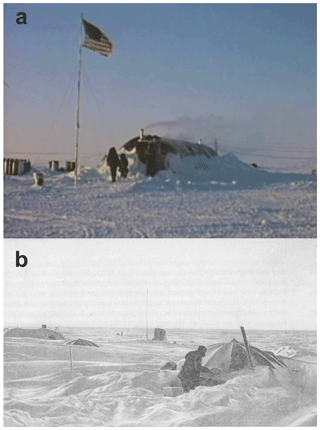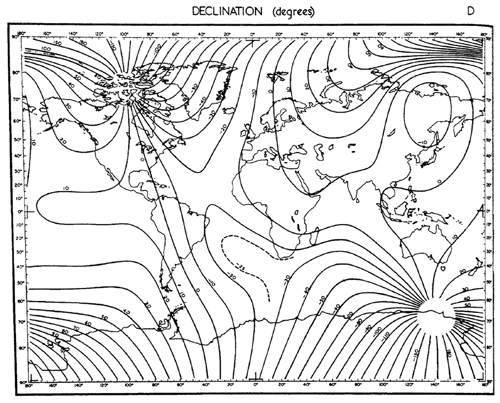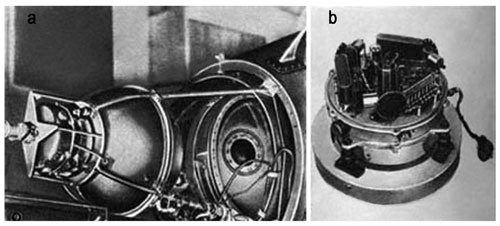the Creative Commons Attribution 4.0 License.
the Creative Commons Attribution 4.0 License.
Sixtieth anniversary of the International Geophysical Year (1957–2017) – contribution of the Soviet Union
Yulia S. Lyubovtseva
Alexei D. Gvishiani
Anatoly A. Soloviev
Olga O. Samokhina
Roman I. Krasnoperov
The International Geophysical Year (IGY) was the most significant international scientific event in geophysical sciences in the history of mankind. This was the largest international experiment that brought together about 300 000 scientists from 67 countries. Well-planned activity of national and international committees was organized for the first time. The history of the IGY organization and complex international experiments in planetary geophysics conducted within its program are discussed in this article. Special attention is given to the estimation of the significance of this project for developing worldwide geophysical research.
- Article
(14890 KB) - Full-text XML
- BibTeX
- EndNote
The idea of global international Earth research was expressed for the first time by Austrian geophysicist Karl Weyprecht (Fig. 1) about a century and a half ago (in 1875). After participation in the Arctic expedition in 1871, Weyprecht understood the futility of individual random expeditions. He wrote that
New knowledge of geophysics is limited by the lack of simultaneous observations at different points, which would make comparisons… But this can only be possible when countries that consider themselves to be advanced in terms of scientific progress decide to work together, completely eliminating any national competition.
He most actively advocated international coordinated research in high-latitude areas. Weyprecht said that
It is necessary to encircle the northern polar region with a chain of stations that in the course of one year would simultaneously carry out various observations using the same instruments and the same methods. The main attention should be given to geophysics. There is almost no branch of natural and physical and geographical sciences that is not fundamentally interested in the most thorough study of polar countries. As far as Earth magnetism is concerned, this is obvious: the magnetic poles are located in the polar regions.
Weyprecht's call to action led to cooperation of scientists from different countries for organizing the First International Polar Year aimed at studying the geophysical processes at northern latitudes. Unfortunately, Weyprecht himself did not live to see his dream come true (Rodnikov et al., 2009; Troitskaya, 1955).
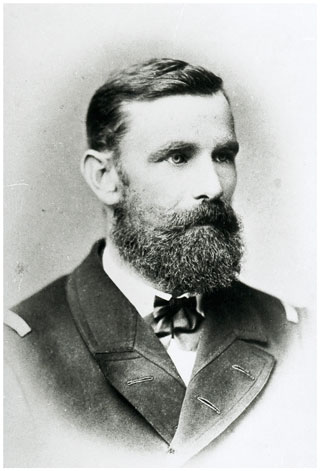
Figure 1Karl Weyprecht (1838–1881) – Austrian geophysicist (https://en.wikipedia.org/wiki/Karl_Weyprecht, last access: 11 August 2020).
The First International Polar Year (IPY) lasted from August 1882 to August 1883. Its program included the study of weather at high latitudes of the north, the movement of drifting ice, and the study of geomagnetic phenomena and polar lights (Raspopov et al., 2007).
For the first time in history, scientists from 12 countries – Austria–Hungary, Canada, Denmark, Finland, France, Germany, the Netherlands, Norway, Russia, Sweden, the United Kingdom, and the United States – joined to participate in the First IPY. Academician Heinrich von Wild, the representative of Russia, was elected as the President of the International Polar Commission.
Newly organized stations were scattered over the North Pole zone: two Russian stations – in Malye Karmakuly (on Novaya Zemlya archipelago) and in island of Sagastyr (in the delta of the Lena River); American stations – in Point Barrow (Alaska) and in Fort Conger (Lady Franklin Bay, Canada); a German station – in Kingua Fjord (Baffinland); and an Austrian–Hungarian station – in Wilczek-Thal (Jan Mayen island). The Dutch expedition worked on Dixon Island and on the ships in the Kara Sea; the Finnish expedition – at Sodankylä (Finland); the Norwegian expedition at Bossecop (Norway); the Danish expedition – at Godthaab (Greenland); and the English expedition – at Fort Rae (Canada) (Troitskaya, 1955).
The IPY was the first attempt to turn disparate geographical expeditions into complex scientific studies. As a result, unique data on drifting ice, weather conditions, geomagnetic phenomena, and polar lights were obtained and then formed the basis for further cooperative long-term activity of geophysicists.
The Second International Polar Year was organized 50 years later. It lasted from August 1932 to September 1933 during a period of low solar activity. The results of this study were of significant interest for their comparison with the data of the active solar period of the First IPY. The Second IPY brought together scientists from 44 countries. The program of the Second IPY was developed by the International Polar Year Commission and consisted of representatives of 10 countries. The Chairman of the Commission was the famous Danish magnetologist Dan Barfod La Cour. Academician Alexander P. Karpinsky represented the Soviet Union.
Twenty countries sent their expeditions to the Arctic. In addition to the main network, the stations located at mid-latitudes also participated in the observations. Only at the northern latitudes were the measurements carried out at more than 100 stations in the Arctic, and some in Antarctica. The number of geomagnetic observatories located north of 60∘ N increased compared to the First IPY.
In the USSR, the Polar Year activity was chaired by the Academy of Sciences and the Arctic Institute headed by academician Otto Yu. Schmidt. During the Second IPY the Soviet Union conducted observations at 59 existing and 35 new stations, opened in 1932 and located mainly above the Arctic Circle (Zubov, 1959). For the first time the atmosphere at high altitudes was studied by piloted balloons and radiosondes developed by Pavel A. Molchanov.
During the IPY the world's most high-latitude hydrometeorological and glaciological observatory on the Fedchenko glacier and the northernmost polar station at that time on Franz Josef Land began their operation. In addition, 15 Arctic Institute expeditions were organized in the USSR: to Franz Joseph Land by the Malygin icebreaker and to the Kara Sea by the Rusanov icebreaker. Considerable oceanological works were carried out in the Barents, Bering, and East Siberian seas. The famous Soviet scientists Otto Yu. Schmidt, Vladimir Yu. Wiese, Nikolai N. Zubov, Mikhail P. Somov, and Rudolf L. Samoylovich (Fig. 2) participated in the expeditions (Raspopov et al., 2007; Troitskaya, 1955; Zubov, 1959).
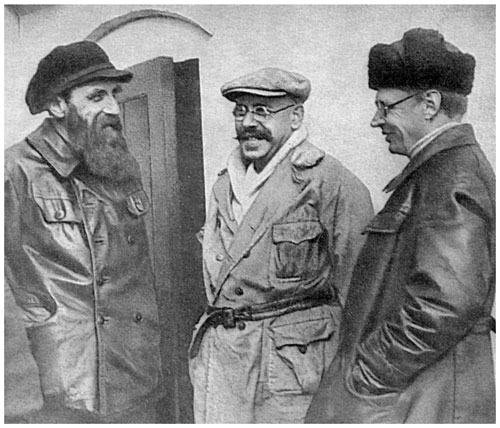
Figure 2The heads of Soviet Arctic research (left to right): Otto Yu. Schmidt (1891–1956), Rudolf L. Samoylovich (1881–1939), and Vladimir Yu. Wiese (1886–1954) (http://ngc.gcras.ru/history.html, last access: 11 August 2020).
The Second IPY brought outstanding results. The first weather maps covering the entire Northern Hemisphere were created. The depths of the Arctic Ocean were measured, and systematic studies of the ionosphere were started for the first time. The thickness of the glacial cover at different points of Antarctica was measured, and the regularities of occurrence of polar lights and their connection with the solar activity were established. But the full use of these materials was held back by World War II.
3.1 IGY organization and preparation
Twenty-five years have elapsed since the Second International Polar Year. There appeared a need for new data on planetary geophysics. New research tools and methods, such as radar, missiles, radioactive isotopes, electronic computers, telemetry systems, and radio telescopes, have opened to scientists unprecedented opportunities. In addition, the results of the First and Second IPYs' experiments at northern latitudes have shown the need for comprehensive international research on the entire planet.
Lloyd Berkner, a pioneer in ionospheric research and a member of the International Council of Scientific Unions (ICSU), proposed new geophysical research at northern latitudes at the ICSU Assembly in 1950, i.e., the Third IPY. Already in 1951, the intentions to carry out further studies after the Second IPY rapidly evolved into the idea of the IGY. It was decided that not only the polar regions but also the whole Earth should be the subject of the research (Berkner, 1959; Gerson, 1958; Nicolet, 1959a, b, 1960; Stuart, 1959).
The proposal to organize an event with such a wide range of disciplines involved was supported by the authoritative scientific organizations – the International Union of Geodesy and Geophysics (IUGG) (Joselyn and Ismail-Zadeh, 2019), the International Astronomical Union (IAU), and the World Meteorological Organization (WMO).
The degree of participation of each country and its contribution to the program were determined primarily by the level of development of the geophysical research, the territory of the country and, of course, by the support of the state. The greatest contributions to the IGY were made by the Soviet Union and the United States.
In October 1951, the ICSU established an international coordinating body for developing the common research program and assigning roles to all participants – the Special Committee for the IGY (CSAGI, an acronym derived from the French), headed by Sydney Chapman (United Kingdom). Lloyd Berkner (USA) was appointed the committee vice-president. Later Soviet scientist Vladimir V. Belousov (Academy of Sciences of the Soviet Union) took up this position.
The first meetings of the CSAGI (October 1952, July 1953, and September 1954) were devoted to the development of the general principles of the IGY program. The program was agreed on to focus on the planetary problems: synoptic observations, state-of-the-art technology (rockets, satellites), and research in hard-to-reach and poorly studied areas. The period, chosen for the IGY, coincided with the expected maximum of solar activity.
The CSAGI presented this program and extended to the national organizations represented in the ICSU an invitation to participate in the IGY. The number of countries that responded to the invitation (23 countries) did not satisfy the CSAGI. In 1954, the CSAGI appealed to all countries to organize national committees for the IGY and begin planning their participation, regardless of their membership in the ICSU. Free access to the IGY was thus opened to all countries.
The expanded CSAGI program proposed the geographical distribution of points of observation and areas of work, expansion of the network of magnetic stations, maps of oceanological sections, and the areas of work in Antarctica; organization of new observational methods, the standardization of observational techniques, the program, and timing of observations (synchronization, world day calendar, communication systems); ways for mutual support and assistance (transfer of instruments to the stations of other countries, joint stations and expeditions, mutual assistance); and organization of data collection and publications (Fig. 3) (Chapman, 1955a, b, 1958).
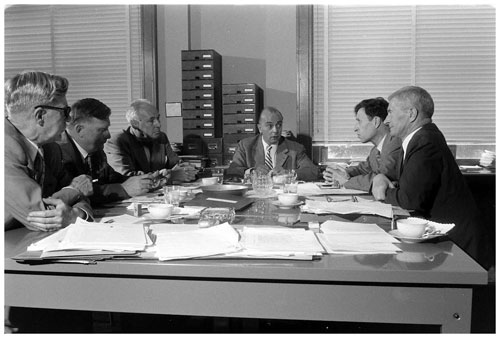
Figure 31957 meeting of the IGY Special Committee Bureau in Brussels. From left to right, Vladimir V. Belousov (Vice-President, USSR), Lloyd Berkner (Vice-President, USA), Marcel Nicolet (Secretary General, Belgium), Jean Coulomb (member, France), and Sydney Chapman (President, UK) (Rodnikov et al., 2009).
By November 1957, the number of IGY member countries had reached 67. Among them were Argentina, Australia, Austria, Belgium, Bolivia, Brazil, Bulgaria, Burma, Canada, Ceylon, Chile, Colombia, Cuba, Czechoslovakia, Denmark, the Dominican Republic, Ecuador, Egypt, Ethiopia, Finland, France, East and West Germany, Ghana, Greece, Guatemala, and Taiwan. The IGY period from 1 July 1957 to 31 December 1958 was subsequently extended on the initiative of Soviet scientists until the end of 1959 under the name of the International Geophysical Cooperation, which allowed overlap with the maximum solar activity.
The IGY program included the following areas: meteorological phenomena and atmospheric physics, the main and altering magnetic field of the Earth, auroras and glows of the night sky, the ionosphere, propagation of radio waves, meteors, and cosmic rays. The latter carried information about the physical situation on the near and remote distances from the planet. The program included the study of the structure of the Earth's interior and its seismic characteristics; glaciological studies of mountain and surface glaciers in both hemispheres of the Earth, including the Arctic and Antarctic; and the comprehensive study of physical processes in the world's oceans, as well as the studies of variations of gravity on the surface of the planet, their variations in latitude and longitude, and the precise definitions of the shape of the Earth (Belousov and Troitskaya, 1957; Khrgian, 1957; Chapman, 1955a, b; Joselyn and Ismail-Zadeh, 2019; Nicolet, 1957, 1984).
At the next conference in Barcelona (September 1956), the committee approved the emblem of the IGY, depicting the Earth's globe belted with the satellite's orbit and turned to the viewer with its least studied region – Antarctica (Fig. 4).
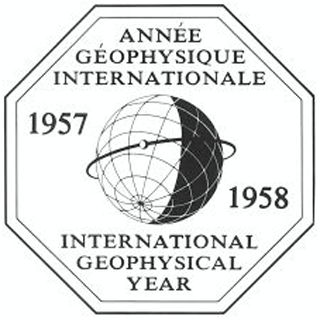
Figure 4Emblem of the International Geophysical Year (https://en.wikipedia.org/wiki/International_Geophysical_Year, last access: 12 August 2020).
3.2 Participation of the USSR in the IGY
The proposals to the Academy of Sciences of the Soviet Union (AS USSR) to join the IGY program were repeatedly received by the ICSU and IUGG in 1952 and 1953. However, it was only after Josef Stalin's death in March 1953 and the subsequent change in state policy that the President of the AS USSR Alexander N. Nesmeyanov and the President of the IUGG Sydney Chapman agreed on the accession of the academy to IUGG membership and the inclusion of the USSR in the IGY program.
In 1954 by the decision of the Government of the USSR a special body was created – the Interdepartmental Committee for preparation and coordination of the IGY under the auspices of the Presidium of the AS USSR, abbreviated as the Soviet Committee of the IGY. Its aim was coordination of scientific research in the Soviet Union. The committee was chaired at first by academician Grigory A. Gamburtsev, and after his death in 1955 by Academy Vice-President Ivan P. Bardin. The corresponding members of the AS USSR Vladimir V. Belousov and Yuri D. Boulanger, academician of the Academy of Sciences of the Georgian SSR Feofan F. Davitaia, and Nikolai V. Pushkov were appointed as Deputy Chairs. Valeria A. Troitskaya became the Scientific Secretary of the Committee.
In 1954, at the 10th General Assembly of the IUGG in Rome, Italy, Vladimir V. Belousov announced the consent of the USSR to participate in the IGY and proposed to broaden the scientific program with seismic, gravimetric, and geoelectric experiments.
On 11 June 1956, the Council of Ministers of the USSR adopted a resolution according to which the governmental bodies were obliged to implement the plans for observations and research approved by the Soviet Committee of the IGY. In accordance with the governmental decision, 20 ministries and governmental departments of the USSR and the Union republics took part in the IGY program. The number of independent participants (institutions and universities) approached 100. The greatest contributions came from the Academies of Sciences of the USSR and the Union republics, the Chief Directorate of the Northern Sea Route of the Ministry of the Merchant Fleet, the Main Administration of the Hydrometeorological Service, the Ministry of Higher and Secondary Education, and the Ministry of Communications. The respective resolution provided the levels of the material support of the work, including the delivery of scientific instruments and equipment for the Soviet observation points, the production of new instruments, and building of stations. The scientific program included 18 directions and 81 topics (Belousov and Troitskaya, 1957; Boulanger, 1956, 1958; Bulkeley, 2008; Kudashin, 2008; Popov, 1957; Troitskaya, 1955).
In accordance with the plans of the scientific research, the committee was divided into sections that were responsible for conducting research and coordinating the activities of scientific institutions within the IGY program. These were the sections: Planetary Geophysics, Meteorology and Atmospheric Physics, Geomagnetism, Aurora, Solar Activity, Cosmic Rays, Ionosphere, Meteors, Longitude and Latitude, Oceanology, Glaciology, Seismology, Gravimetry, Missiles, and Artificial Satellites. The committee sections developed the detailed plan of participation in the IGY and coordinated its activity with the plans of other countries. The committee's activity was covered in a special information bulletin, the first issue of which had been published in 1956 (Povzner, 1958, 1960).
By 1 July 1957, about 300 000 specialists at 4000 scientific stations located across all continents were ready for comprehensive geophysical observations. One of the largest groups of geophysicists in the world was the Soviet one. More than 500 stations and observatories distributed over vast expanses from Franz Josef Land to Turkmenia, from the Baltic Sea to Chukotka, and far away in Antarctica began to study planetary physical processes under a unified program with their foreign partners.
4.1 Meteorology and atmosphere
Meteorological observations were one of the leading research areas in the IGY program. The global network of meteorological stations established during the IGY consisted of more than 4000 scientific stations unified by a common program and exchange obligations with observational data. For the first time it became possible to analyze global meteorological data from 750 stations carrying out altitude observations by radar facilities. The stations were equipped with instruments for measuring ozone, silver clouds, and atmospheric electricity at high altitudes. For the first time, a network of meteorological stations was organized in hard-to-reach regions and in the Antarctic (List of stations and observatories of the USSR, 1955).
More than 500 stations in the Soviet Union were involved in meteorological observations of different types. In addition to the standard meteorological network, 292 new stations were deployed (Belousov and Troitskaya, 1957; Troitskaya, 1955).
The observations and the research were carried out by 38 observatories and 12 institutes of the Main Administration of the Hydrometeorological Service of the USSR. The use of high-speed electronic computers helped to process large arrays of meteorological data and provided short-term forecasts.
The IGY program included comprehensive research on the composition and chemical transformations in the Earth's atmosphere, the studies of its radioactivity, the electrical conductivity, the photochemical ozone-productive cycles, aerosol, and carbon dioxide measurements. These activities were maintained after the IGY, because all these factors are important for understanding the climate-forming processes. As a result, there appeared a reasonable assumption that the increases in carbon dioxide, methane, and nitrous oxide levels in the atmosphere are associated with anthropogenic activity. These gases cause significant warming in the surface layer of the atmosphere and cooling in the stratosphere.
4.2 Antarctic and Arctic
The Antarctic and Arctic significantly affect the climate and weather of the Earth. Geographical and magnetic poles are located in these regions. These were the reasons why the Arctic and Antarctic were among the most important parts of the world for intensive research during the period of the IGY. The main goals of the research were to determine the regularities of the general circulation of the atmosphere and the study of the weather at high latitudes. Among other studies were the movements of drifting ice and geomagnetic and aurora phenomena. The conditions of radio interference in the far north and far south, induced by auroras, were thoroughly studied. It was revealed that this interference was mainly caused by high-energy particles (electrons and protons).
For the first time in history, it was possible to organize numerous expeditions on the Antarctic continent itself and on the surrounding islands. The countries that deployed the IGY stations in Antarctica were Argentina, Australia, Belgium, Chile, France, Japan, New Zealand, Norway, the United Kingdom, the USA, and the USSR. A total of 50 stations were organized on the Antarctic continent and sub-Antarctic waters (Walton, 1987). The map in Fig. 5 shows the locations of the Antarctic stations that participated in the IGY program. This map was compiled using information from https://www.add.scar.org/ (last access: 28 May 2020) and https://en.wikipedia.org/wiki/Research_stations_in_Antarctica (last access: 28 May 2020). The multinational team of polar explorers provided data from different regions of Antarctica (Figs. 5, 6).
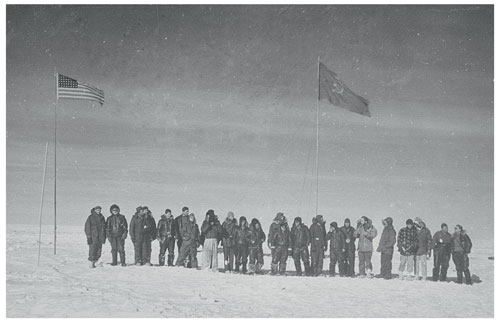
Figure 6American and Soviet scientists in the Antarctic. Photo by Alexander Maksimov (Rodnikov et al., 2009).
According to the IGY program, the USSR committed to organize observations at seven stations: Mirny, Oasis, Pionerskaya, Vostok (at the magnetic South Pole), Vostok-1, Sovetskaya, and Komsomolskaya (Khrgian and Britaev, 1957; Popov, 1957). As a part of the preparation to the IGY the Soviet government organized a complex Antarctic expedition in 1955. The ships Ob', Lena, and Refrigerator No. 7 took part in this expedition. The program included studying the Antarctic water movement, its geological structure and seismicity, and its gravitational and magnetic fields and compiling the physical and geographical description of modern glaciers. Already in 1956, the Soviet polar explorers had started the complex research on the Antarctic continent.
As a result of complex measurements, data on the general state of sea ice in the region from 80 to 100∘ east longitude in different seasons were obtained; the structure and properties of the glacial cover and its temperature conditions were studied; valuable material on synoptic processes in the Antarctic was accumulated, and glaciological and biological studies in the vicinity of the Mirny station were conducted. For the first time the short-term weather forecasts were compiled.
In the Arctic region according to the IGY program over 40 research stations were deployed. For the first time the wide network was organized for observations of auroras, the ionosphere, and cosmic rays. Figure 7 shows the location of the Arctic stations that provided data within the IGY. This map was compiled using information from https://en.wikipedia.org/wiki/List_of_research_stations_in_the_Arctic (last access: 28 May 2020) and World Data Center for Solar-Terrestrial Physics (2020).
In the eastern sector of the Arctic in the polar regions of the USSR, 35 permanent and temporary stations operated during the IGY. Along with coastal stations and the Arctic Ocean islands, geophysical observations were carried out at drifting stations of the SP series (“Severny Polus” – “North Pole”) SP-4, SP-6, and SP-7 (Fig. 8b) deployed on drifting ice. In the western sector of the Arctic, American polar explorers worked at US drifting stations Alpha (Fig. 8a) and Bravo (Cottell, 1960). In the deep regions of the ice-covered island of Greenland, the Danish–Swiss–French–West German expedition conducted collaborative research. Polish scientists studied geophysical phenomena on Svalbard at the Hornsund observatory. They performed photography of auroras every 5 min along with recording of temperature and wind speed four times a day.
It was revealed that along the coast of Antarctica and in the area of the North Pole the solar radiation is much more intense than at the Equator. This was explained by lower concentrations of water vapors in the atmosphere, which actively absorb the solar radiation in the equatorial area. At altitudes from 10 to 20 km above sea level the so-called jet currents were discovered – the powerful air “rivers” hundreds of kilometers wide flowing at speeds of hundreds of kilometers per hour.
4.3 Oceanography
Prior to the IGY, oceanographic studies of the World Ocean were carried out by certain researchers from different countries without a common plan. Consequently, it was not possible to have a complete understanding of the processes in the world ocean. The IGY was the first attempt to provide coordinated measurements in the vast region from Arctic seas to sub-Antarctic waters by scientists from different countries within a common scientific program.
The IGY program outlined three main challenges for oceanographers that required coordinated international cooperation: the study of the Arctic and mid-latitude currents in the Atlantic and Pacific oceans; the study of changes in the physical and chemical properties of water masses over the past 25 years at different depths; and testing of new methods for measuring currents and the transport of water masses from surface layers to deeper ones. For the study of the ocean floor the most modern methods were used: ultrasonic sounding and deep-water submarines.
Oceanographic studies were carried out onboard 70 ships from different countries within the coordinated program (Fig. 9). Twelve ships originated from the USSR. The observation program included both meteorological observations and research on physical oceanography (temperature and water salinity, currents, transparency, and color of seawater), geology (relief of the ocean floor, sediments, soils), chemistry and biology of water (plankton, suspended solid material), and radioactive element content in seawater. A great deal of attention was focused on studying the thermal and dynamic interactions between the atmosphere and the ocean. The program of the Soviet Union included oceanological studies in the Greenland, Norwegian, Chukchi, and Bering seas and in selected areas of the Pacific and Atlantic oceans (Morozov, 2007; Troitskaya, 1957).
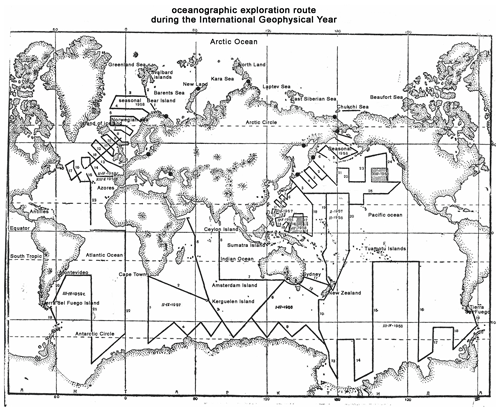
Figure 9Oceanographic exploration route during the International Geophysical Year (Troitskaya, 1957).
Among others the research program was performed by the following scientific ships: Diamantine (Australia), Jeanne d'Arc (France), Gauss (West Germany), Explorer (United Kingdom), East Wind (USA), and Vityaz, Mikhail Lomonosov, and the world's only non-magnetic schooner, Zarya (USSR). As part of the complex Antarctic expedition, many parameters of the atmosphere and ocean were studied on the Ob' (USSR) diesel–electric ship.
Onboard the dozens of research vessels, samples of ocean bottom rocks and seawater samples were collected. The floating laboratories provided information on the speed of ocean currents and the intensity of the Earth's magnetic field.
Shipborne radars were used to control the flights of balloon probes with meteorological instruments. At the highest latitudes of the Arctic, Soviet scientists worked at drifting stations of the North Pole series (Fig. 8b).
One of the discoveries made by oceanologists was the Cromwell Current. With a speed of about 1.5 m s−1 the current moves at a depth of more than 100 m from west to east in the Pacific Ocean, until, having overcome more than 4500 km, it does not cease at the Galapagos Islands. Another important result was the discovery of a giant mid-ocean ridge on the sea floor that surrounds the entire globe.
4.4 Geomagnetism
This section of the IGY scientific program included the study of magnetic storms and substorms, short-period geomagnetic variations and the main magnetic field of the Earth.
Observations of the Earth's magnetic field were carried out at 276 stations. Thirty observatories were deployed within the territory of the USSR. The geomagnetic stations were equipped with magnetic variometers and quartz magnetometers. Figure 10 shows the example of a daily magnetogram registered at a geomagnetic observatory during the IGY.
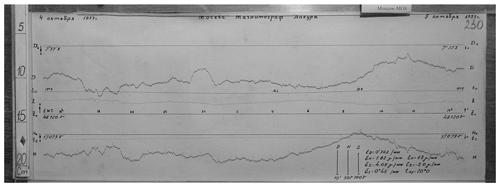
Figure 10Photocopy of the daily magnetogram (magnetic vector components D, H, Z) registered on 4 October 1957 at geomagnetic observatory Moscow (IAGA-code: MOS) using standard La Cour recorder (World Data Center for Solar-Terrestrial Physics, http://www.wdcb.ru/geomscan/Historic/Cor/MOS/MOS57/MOS19571004.JPG, last access: 12 August 2020).
Magnetic observations were carried out over all parts of the globe, and for the first time they were organized in many places of the Antarctic and in the equatorial belt on Jarvis Island. Jarvis Island is located at the intersection of two equators – the magnetic and geographical ones (they do not coincide normally).
For the first time the magnetic field of the Earth was measured at a height of several hundred kilometers by means of rockets and artificial satellites.
The study of the magnetic field of the seas and oceans was conducted by the only one in the world, magnetic vessel Zarya (USSR) (Fig. 11). The motor sailing three-masted schooner Zarya (or Zarja) was built in Finland in 1952 on the order of the USSR Academy of Sciences. She was fully equipped with Soviet-built geophysical instruments, including special shipborne magnetometers for geomagnetic field observations. The schooner had a 500 t displacement and was built of solely non-magnetic materials. Having covered within 2.5 years about 100 000 km, the schooner six times crossed the Atlantic Ocean and five times the Indian Ocean and helped to discover the magnetic anomalies unknown earlier (Fig. 12) (Troitskaya, 1957).
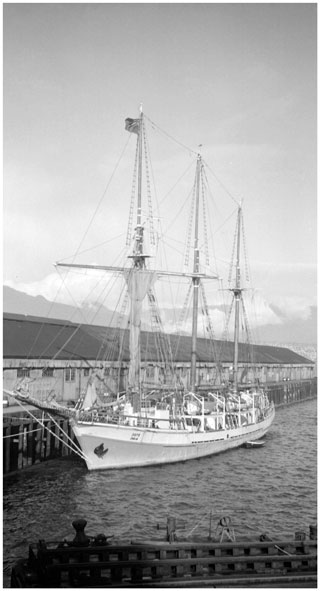
Figure 11Non-magnetic oceanographic research vessel (schooner) Zarya (or Zarja). Built in Finland in 1952, equipped with Soviet geophysical instruments, including special magnetometers for geomagnetic observations during the IGY. Photo taken in Canada, circa 1962 (http://www.wrk.ru, last access: 2 June 2020).
The unique data of the comprehensive study of the Earth's magnetic field over the land and in the oceans were of great importance and have not lost their significance to date. A vast and comprehensive program of geomagnetic observations that was successfully performed during the IGY became the pivotal part of the World Magnetic Survey that was implemented within the following decade. The International Association of Geomagnetism and Aeronomy (IAGA) coordinated this ambitious project. The main result of this unprecedented international scientific activity was the introduction of the first generation of the International Geomagnetic Reference Field (IGRF) for epoch 1965.0 (Zmuda, 1971). Figure 13 shows the example of the world geomagnetic map compiled using the parameters of the IGRF 1965.0 model.
4.5 Solar–terrestrial links
The problem of solar–terrestrial links played a huge role in the IGY program. For this reason, the program was carried out during the period of the highest solar activity of the last centuries, accompanied by the largest solar flares and, accordingly, powerful magnetic storms on Earth, most intensive auroras and ionospheric disturbances. Eighty-eight observatories conducted solar observations during the IGY, 15 of which were located in the USSR.
Previously, the atmosphere at high altitudes was thought to contain neutral aerosol particles. During the IGY it was established that the suspended particles carry high electric charges and are thus held near the planet by its magnetic field, which is exposed to the Sun.
4.6 Glaciology
Studies within the glaciological program of the IGY made it possible to assess the total amount of ice on the Earth and the number of glaciers affecting the climate (Review, 1958).
It was established that the largest of the mountain glaciers, the Fedchenko Glacier in the Pamirs, was 900 m thick at some points. And in Antarctica, the maximum thickness of the ice shield exceeded 4300 m. The average thickness of the ice shield for the entire sixth continent was about 2 km. This ice “blanket” weighs 3×1016 t.
A new glacial area was detected and studied in the Kodar Ridge (Stanovoye Upland in Transbaikalia). The total volume of ice on the Earth was assessed as being close to 30×106 km3.
4.7 Solid Earth
Joint efforts of the scientists from the USSR, India, and Italy allowed for collection of the most valuable information on the structure of the Earth's crust of the Pamirs and Himalayas.
The international group of scientists implemented new methods of deep sounding, which provided valuable new data on the subsoil lying under the ocean floor. American and Australian seismologists conducted thousands of kilometers of seismic sections along the territories of their countries. It was shown that the solid crust of the Earth is heterogeneous and comprises three different layers: the upper, sedimentary, up to 20 km thick in sedimentary depressions; the so-called “granite” (in quotes, because it does not necessarily consist of granite), and the layer similar to basalt. The thickness of the “granite” layer is 10–20 km, and the “basalt” layer is about 10–15 km. The lower boundary of the “basalt” layer, called the Moho discontinuity, serves as a limit for the Earth's crust. Its thickness is different under the continents and under the oceans. The average thickness of the continental crust is 35 km and up to 70 km in mountainous regions. The ocean crust is thinner: its thickness does not exceed 5–15 km.
4.8 Satellites
The task of carrying out measurements in space was included in the IGY program already in 1953 (Stern, 1989). The space experiment program included the measurement of space radiation, magnetic fields, concentration and ion composition of ionospheric plasma, and shortwave radiation of the Sun, which were also important for the development of space technology. Prior to the launch of the first satellite, no one could predict how long it would operate in low Earth orbit, for the information on the upper atmosphere was very scarce. It was no coincidence that the IGY logo adopted in 1954 contained a stylized image of a satellite orbiting the Earth. The scientific tasks assigned to the future satellites were of importance for further development of space technology. The physical conditions in the upper atmosphere that affect the movement of satellites, radio communication, radio wave propagation through the ionosphere, and the cosmic radiation had to be studied (Khrgian and Britaev, 1957; Nicolet, 1984; Petrukovich et al., 2009; Raspopov, 2007).
The USA officially announced plans to launch a satellite with a scientific payload as part of the IGY program in 1955. The Soviet representative in the CSAGI, academician Leonid I. Sedov, presented similar plans in 1956. This public announcement turned out to be a complete surprise to the other participants because of the complete secrecy of the Soviet space program. The first known Soviet missiles since the 1940s were capable of performing only suborbital flights and were not powerful enough to launch an object into a circular orbit. Only the R-7 ballistic missile developed in 1957 was able to solve this task (Petrukovich et al., 2009).
Initially, according to the IGY program, a research satellite mission was entrusted to the USSR. It included the launch of a 1000 kg weight satellite (the so-called “Object-D”) with more than 10 separate instruments for a wide range of scientific experiments. Because of the delays in the preparation of this satellite for launch, the head of the Soviet space program Sergey P. Korolev made a decision to launch a simpler satellite equipped only with a radio transmitter to confirm the priority of the first orbital launch after the USSR. This satellite was launched on 4 October 1957 and now is widely known as Sputnik 1. It was just an aluminum sphere with a diameter of 58 cm and a weight of 83 kg (Fig. 14). It carried two radio transmitters operating at frequencies of 20.005 and 40.002 MHz. The two-frequency scheme made it possible to assess ionospheric parameters along the radio wave propagation path. The first satellite was in orbit for 92 d (Alpert, 1958; Alpert et al., 1958).
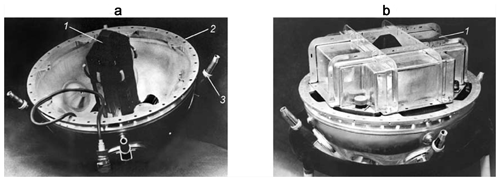
Figure 14Internal layout of Sputnik 1: (a) with removed batteries (1 – radio transmitter, 2 – front half-shell, 3 – antenna flexible joint); (b) with installed batteries (Petrukovich et al., 2009).
On 3 November 1957, the USSR launched the second satellite – Sputnik 2. It was a capsule with a height of 4 m and a weight of 508 kg (Fig. 15). Three experiments were included in the program of Sputnik 2: biological with a dog, measurements of UV rays and X-rays of the Sun, and study of cosmic rays (Vakulov et al., 1962; Vernov et al., 1968).
The satellite Sputnik 3 (Fig. 16) was launched on 15 May 1958 and had almost all the systems typical for a modern satellite, including a vast set of scientific instruments: equipment for measuring pressure and atmospheric composition in the upper layers, concentration of positive ions, intensity of electrostatic and magnetic fields, composition and variations of primary cosmic radiation, and temperature inside and on the surface of the satellite. The first spaceborne fluxgate magnetometer was constructed by the group of Shmaya Sh. Dolginov at NIIZM (the Russian acronym for the Research Institute of Terrestrial Magnetism; at present the Pushkov Institute of Terrestrial Magnetism, Ionosphere and Radio Wave Propagation of the Russian Academy of Sciences – IZMIRAN). This magnetometer installed on Sputnik 3 is shown in Fig. 17 (Dolginov, 1998; Dolginov et al., 1970; Petrukovich et al., 2009).

Figure 16Appearance (a) and layout of the scientific equipment (b) of Sputnik 3: 1 – magnetometer; 2 – instrument for photon registration in cosmic rays; 3 – magnetic and ionization manometers; 4, 5 – instruments for measuring cosmic intensity radiation; 6 – sensor for registration of micrometeorites (Petrukovich et al., 2009).
The first American satellite, Explorer 1, was launched on 1 February 1958. It was in orbit till 28 February 1958. The apogee of Explorer 1 was higher than that of Sputnik 1 – 2550 km. Another American satellite, Explorer 3, was launched on 27 June 1958. Its mission was also successful. Data obtained by Explorer 1 and Explorer 3 allowed for discovery of the radiation belts of the Earth – permanently existing areas of extremely high radiation at equatorial latitudes. Later they were referred to as Van Allen belts (Van Allen, 1960, 1984). Specialists studying the ionosphere, the electrically conductive layer of the atmosphere that absorbs and reflects radio waves, discovered an additional layer of charged particles during a magnetic storm. It turned out that this short-lived layer was generated by X-rays caused by a solar flare. The magnetic measurements carried out onboard the satellites showed that magnetic anomalies discovered on the Earth's surface were registered even at high altitudes. The launch of the first satellite was the central event of the IGY; for the first time, scientists obtained an opportunity to look at the Earth from the side. The first satellite (orbital) photographs of the Earth were made in 1959 by the USA Explorer 6 satellite (Stauss, 1965).
In the course of 30 months the IGY accumulated an unprecedented amount of data on the life of our planet. These data were collected in data sheets and tables, in charts and maps, and in kilometers of photo and film, which captured all the physical processes on the Earth. Such materials were unique: they were created in a single copy directly in the course of observations. In order to ensure the preservation and free access to the data, the ICSU decided in 1956 to create a new international system of World Data Centers.
The National Committees of the IGY of two leading countries – the USA and USSR – agreed to organize and finance institutions that had never existed before – the World Data Centers (WDCs). Both these centers accumulated the results of all geophysical observations included in the IGY program.
These centers exchanged free copies of all materials received from observers. All countries had a unique opportunity to obtain any material from any WDC. Within 3 years after the beginning of the IGY, the WDCs received about 1 million storage units containing the information on all continents from all participants. Thus, the most complete archive in the history of science, highlighting all aspects of physical life of the planet, was created (Kharin et al., 2008). For the first time it allowed the “internationalization” of the scientific community involved in data processing and analysis and made it wider than the community of direct observers.
The first results of the IGY were formulated at the Fifth General Assembly of IGY in 1959 in Moscow. One-thousand participants from all continents attended this assembly. Much later, in honor of the IGY in 2007, the Geophysical Center of the Russian Academy of Sciences (RAS) organized the International Conference “The Fiftieth Anniversary of The International Geophysical Year and The Electronic Geophysical Year”. More than 100 scientists from France, Germany, Israel, Russia, the UK, Ukraine, and the USA attended this conference.
The year 2008 was declared by the United Nations General Assembly as the International Year of Planet Earth (IYPE). The major international scientific organizations participated in this activity. Several significant international scientific programs were organized within these years. Among the most notable programs were the International Polar Year 2007–2008 (or Fourth IPY); the International Heliophysical Year (IHY 2007); and the Electronic Geophysical Year (eGY) (Raspopov et al., 2007). Among the key coordinators of the IHY and eGY was the IUGG International Association of Geomagnetism and Aeronomy (IAGA) (Kerridge, 2007).
The scientific results of the IGY were published in journal articles, separate collections, and books in many countries. The international “Annals of IGY” for a certain period of time were published in the UK. In the USSR, the results of research were published in the series of works “Results of IGY” organized by the Soviet Committee of the IGY.
Even many years ago it was impossible to list all the scientific results and achievements of the grandiose complex international experiment named the International Geophysical Year.
During the IGY, unique scientific discoveries were made. We list some of the most important ones.
-
The central event of the IGY was the launch of the first artificial satellite in the USSR; 4 October 1957 is the date of a new era not only in the field of Earth sciences, but also in the history of mankind.
-
The possibility of direct extra-atmospheric measurements has led to the fundamental discovery of radiation belts around the Earth – the permanently existing areas of extremely high radiation at equatorial latitudes.
-
For the first time in history, numerous expeditions to Antarctica and the surrounding islands were organized. A total of 50 observation stations operated by 11 countries were active during the period of the IGY. The USSR operated seven Arctic stations: Mirny, Oasis, Pionerskaya, Vostok (at the magnetic South pole), Vostok-1, Sovetskaya, and Komsomolskaya. The observation program included studies of atmospheric circulation, auroras, magnetic storms, the ionosphere, and glaciology.
-
The unique Soviet non-magnetic schooner Zarya made the measurements of the Earth's magnetic field over 100 000 km in the Atlantic, Indian, and western Pacific oceans. Simultaneously, magnetic field measurements were organized in all parts of the globe at 276 stations. For the first time the satellite measurements at heights of 200 km and higher were carried out.
-
Seventy vessels took part in oceanographic researches. Twelve vessels were from the USSR. The Cromwell Current was discovered. Instead of the smooth seabed, a giant rift structure was found on the ocean floor. It encircles the entire planet.
-
To concentrate the efforts and coordinate measurements for the entire period of the IGY, a calendar of regular world days and regular meteorological intervals, approved by the CSAGI, was drawn up when the measurements at the geophysical stations were carried out under the extended program.
-
For the first time in the history of science, to facilitate the collection, exchange, and storage of observation data on all areas, obtained during the IGY period, two World Data Centers were established: WDC-A (USA) and WDC-B (USSR). Now these centers are recognized as permanent ones. At present there are 50 such centers in 12 countries of North America, Europe, Asia, and Oceania. Several WDCs are located in Russia.
-
During the organization and carrying out of the IGY, a modern research structure was introduced. It allowed the synchronization of the research program for carrying out complex experiments in different countries involving different specialists.
-
The system included measuring facilities, communication and information exchange systems, schemes of interaction between different departments, and structures for solving the problems of global geophysics.
-
For the benefit of science, all the difficulties related to the coordination of research in countries with different political and economic systems have been overcome.
-
Successful implementation of the IGY program contributed to the development of a number of new institutions, observatories, scientific directions, committees in international unions of the ICSU, and global international projects in different countries.
The International Geophysical Year of 1957–1958 has entered the history of science and mankind as one of the most notable humane and noble activities. It was acclaimed as the most significant peaceful activities since the Renaissance and Copernican Revolution (Untersteiner, 2009), marking the dawn of the Space Age.
Books, journals and newsletters were provided by the Library on Natural Sciences of RAS and the National Geophysical Committee of RAS. Information on IGY observatories and stations was taken from open and reliable web resources: http://wikipedia.org and https://add.scar.org. A photocopy of the magnetogram was provided by the World Data Center for Solar-Terrestrial Physics in Moscow (http://www.wdcb.ru/stp/index.en.html, World Data Center for Solar-Terrestrial Physics, 2020). The documentary film on US Drifting Station Alpha was provided by the National Snow and Ice Data Center (https://nsidc.org/, Untersteiner, 2009).
YSL, ADG, and AAS prepared the manuscript chapters. OOS prepared the maps and figures and edited the references. RIK prepared Sect. 4.8 and compiled and edited all the manuscript parts.
The authors declare that they have no conflict of interest.
The authors wish to thank the team of the World Data Center for Solar-Terrestrial Physics in Moscow (Russia) for preservation and public dissemination of historical geophysical data. The authors also wish to thank Alexey A. Lushnikov for valuable recommendations and help in preparation of the manuscript and Irina E. Vitvitskaya for providing us with valuable archive materials on the IGY.
This work employed data provided by the Shared Research Facility “Analytical Geomagnetic Data Center” of the Geophysical Center of RAS (http://ckp.gcras.ru/, last access: 11 August 2020).
This research has been supported by the Ministry of Science and Higher Education of the Russian Federation (grant no. 075-01077-20-01).
This paper was edited by Tamara Kuznetsova and reviewed by Mioara Mandea and one anonymous referee.
Alpert, Ya. L.: On the method of studying the ionosphere using an artificial Earth satellite, Phy.-Usp.+, 64, 3–14, https://doi.org/10.3367/UFNr.0064.195801a.0003, 1958 (in Russian).
Alpert, Ya. L., Dobryakova, F. F., Chudesenko, E. F., and Shapiro, B. S.: About some results of determining the electronic concentration of the outer region of the ionosphere from observations of the radio signals of the first Earth satellite, Phy.-Usp.+, 65, 161–174, https://doi.org/10.3367/UFNr.0065.195806a.0161, 1958 (in Russian).
Belousov, V. V. and Troitskaya, V. A.: International Geophysical Year, Bulletin of the USSR Academy of Sciences, 7, 3–7, 1957 (in Russian).
Berkner, L. V.: International Collaboration in Science, ICSU Review, 1, 6–16, 1959.
Boulanger, Yu. D.: International Geophysical Year (in Russian), Bulletin of the USSR Academy of Sciences, 1, 3–8, 1956.
Boulanger, Yu. D.: Development of research under the program of the International Geophysical Year, Bulletin of the USSR Academy of Sciences, 12, 47–49, 1958 (in Russian).
Bulkeley, R.: Aspects of the Soviet IGY, Russian Journal of Earth Sciences, 10, 1–17, https://doi.org/10.2205/2007es000249, 2008.
Chapman, S.: The International Geophysical Year, 1957–58, Nature, 175, 55–56, https://doi.org/10.1038/175055a0, 1955a.
Chapman, S.: Scientific Programme of the International Geophysical Year 1957–58, Nature, 175, 402–406, https://doi.org/10.1038/175402a0, 1955b.
Chapman, S.: The International Geophysical Year, Transactions, American Geophysical Union, 40, 112, https://doi.org/10.1029/tr040i002p00112, 1958.
Cottell, I. B.: United States research at drifting stations in the Arctic Ocean, Polar Rec., 10, 269–274, https://doi.org/10.1017/s0032247400051172, 1960.
Dolginov, Sh. Sh.: The First Magnetometer in Space, in: 40 Years of COSPAR, edited by: Haerendel, G., Grzedzielski, S., Cavallo, G., and Battrick, B., Eur. Space Agen., Paris, 1998.
Dolginov, Sh. Sh., Kozlov, A. N., and Chinchevoi, M. M.: Magnetometers for space measurements, Rev. Phys. Appl., 5, 178–182, https://doi.org/10.1051/rphysap:0197000501017800, 1970.
Gerson, N. C.: From Polar Years to IGY, in: Advances in Geophysics. Vol. 5, edited by: Landsberg, H. E. and Van Mieghem, J., Academic Press, 1–52, https://doi.org/10.1016/S0065-2687(08)60074-6, 1958.
Joselyn, J. A. and Ismail-Zadeh, A.: IUGG evolves (1940–2000), Hist. Geo- Space Sci., 10, 45–72, https://doi.org/10.5194/hgss-10-45-2019, 2019.
Kerridge, D.: IAGA, International Association of Geomagnetism and Aeronomy, in: Encyclopedia of Geomagnetism and Paleomagnetism, Springer Netherlands, 407–408, https://doi.org/10.1007/978-1-4020-4423-6_142, 2007.
Kharin, E. P., Sergeeva, N. A., Zabarinskaya, L. P., and Krylova, T. A.: Data from planetary geophysical research (in Russian), Engineering Ecology, 5, 52–59, 2008.
Khrgian, A. Kh. (Ed.): Central organizations for the International Geophysical Year, International Geophysical Year Newsletter, 3, 5–8, 1957 (in Russian).
Khrgian, A. Kh. and Britaev, A. S.: International Geophysical Year, Usp. Fiz. Nauk, 62, 475–483, https://doi.org/10.3367/ufnr.0062.195708g.0475, 1957 (in Russian).
Kudashin, A. S.: Geophysical Center of RAS, Engineering Ecology, 5, 4–9, 2008 (in Russian).
List of stations and observatories of the USSR, on which the observations will be organized during the International Geophysical Year of 1957–1958, Publishing House of the Academy of Sciences of the USSR, Moscow, USSR, 16 pp., 1955 (in Russian).
Morozov, E. G.: Research in the oceans during and after the IGY, Earth and the Universe, 4, 44–50, 2007 (in Russian).
Nicolet, M.: The International Geophysical Year, Nature, 180, 7–10, https://doi.org/10.1038/180007a0, 1957.
Nicolet, M. (Ed.): The International Geophysical Year Meetings, Annals of the International Geophysical Year, Vol. II, Pergamon Press, London, England, 323 pp., 1959a.
Nicolet, M. (Ed.): The Membership and Programs of the IGY Participating Committees, Annals of the International Geophysical Year, Vol. IX, Pergamon Press, London, England, 321 pp., 1959b.
Nicolet, M. (Ed.): The Fifth Meeting and the Termination of CSAGI, Annals of the International Geophysical Year, Vol. X, Pergamon Press, London, England, 296 pp., 1960.
Nicolet, M.: Historical aspects of the IGY, History of Geophysics, Vol. 1, AGU, 44–46, https://doi.org/10.1029/HG001p0044, 1984.
Petrukovich, A. A., Mulyarchik, T. M., Vasyutkov, S. V., Verigin, M. I., Kotova, G. A., and Styazhkin, V. A.: The first Soviet space experiments in 1957–1959: history and results, History of Earth science, 2, 5–24, 2009 (in Russian).
Popov, L. I.: Preparation of the hydrometeorological service of the USSR for the International Geophysical Year, International Geophysical Year Newsletter, 2, 95–99, 1957 (in Russian).
Povzner, A. D.: On the decisions of the Special Committee on the International Geophysical Year, adopted in 1954–1957 (in Russian), International Geophysical Year Newsletter, 4, 65–104, 1958.
Povzner, A. D.: International scientific unions and problems of organizing cooperation after the end of observations under the IGY program, International Geophysical Year Newsletter, 8, 67–86, 1960 (in Russian).
Raspopov, O. M., Kuz'min, I. A., and Kharin, E. P.: The 50th anniversary of International Geophysical Year (1957–1958): from the First International Polar Year (1882–1883) to the International Heliophysical Year (2007–2008) and International Polar Year (2007–2009), Geomagn. Aeronomy+, 47, 1–7, https://doi.org/10.1134/s001679320701001x, 2007.
Review of the First Eleven Months of the International Geophysical Year, National Science Foundation, Government Printing Office, Washington DC, USA, 1958.
Rodnikov, A. G., Sergeyeva, N. A., and Zabarinskaya, L. P.: Research on the Earth's Interior Conducted by Russia after IGY: The Geotraverse Project and “INTERMARGINS”, Data Science Journal, 8, S24–S34, https://doi.org/10.2481/dsj.8.S24, 2009.
Stauss, H. E.: Introduction, in: Scientific findings from Explorer VI, National Aeronautics and Space Administration, Washington DC, USA, 1–6, 1965.
Stern, D. P.: A brief history of magnetospheric physics before the spaceflight era, Rev. Geophys., 27, 103, https://doi.org/10.1029/rg027i001p00103, 1989.
Troitskaya, V. A.: On the international geophysical year, Izv. USSR Academy of Sciences, 4, 397–399, 1955 (in Russian).
Troitskaya, V. A.: The International Geophysical Year, Sovetskaya Rossiya, Moscow, USSR, 1957 (in Russian).
Stuart, S. (Ed.): The Histories of the International Polar Years and the Inception and Development of the International Geophysical Year, Annals of the International Geophysical Year. Vol. I, Pergamon Press, London, England, 458 pp., 1959.
Untersteiner, N.: International Geophysical Year, 1957–1958: Drifting Station Alpha Documentary Film, National Snow and Ice Data Center, https://doi.org/10.7265/N5MK69TW, 2009.
Van Allen, J.: On Radiation Hazard of Space Flights, Phy.-Usp.+, 70, 715–724, https://doi.org/10.3367/UFNr.0070.196004f.0715, 1960 (in Russian).
Van Allen, J.: Genesis of the International Geophysical Year, History of Geophysics, Vol. 1, AGU, 49–50, https://doi.org/10.1029/HG001p0049, 1984.
Vakulov, P. V., Vernov, S. N., Gorchakov, E. V., Logachev, Yu. I., Nesterov, V. E., Nikolaev, A. G., Pisarenko, N. F., Savenko, I. A., Chudakov, A. E., and Shavrin, G. I.: Investigations of radiation during flights of satellites, space vehicles and rockets, Izv. USSR Academy of Sciences. Ser. Physical, 26, 758–780, 1962 (in Russian).
Vernov, S. N., Vakulov, P. V., and Logachev, Yu. I.: Radiation belts of the Earth, in: Succeesses of the USSR in the exploration of outer space, edited by: Vinogradov, A. A., Blagonravov, A. A., Kondratyev, K. Y., Kroshkin, M. G., et al., Nauka Press, Moscow, USSR, 106–148, 1968 (in Russian).
Walton, D. W. H. (Ed.): Antarctic Science, Cambridge University Press, Cambridge, England, 280 pp., 1987.
World Data Center for Solar-Terrestrial Physics: Photocopy of the magnetogram, available at: http://www.wdcb.ru/stp/index.en.html, last access: 28 May 2020.
Zmuda, A. J.: The World Magnetic Survey 1957–1969, Eos, Transactions, American Geophysical Union, 52, 60, https://doi.org/10.1029/eo052i002p00060, 1971.
Zubov, N. N. and Kozitsky, N. I.: The participation of the Soviet Union in the Second International Polar Year (1932–1933), Publishing House of the USSR Academy of Sciences, Moscow, USSR, 1959 (in Russian).







